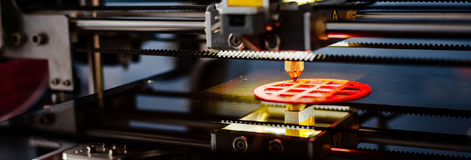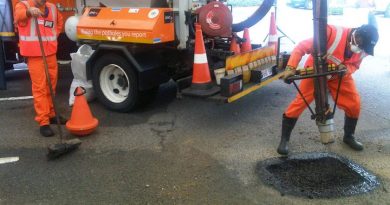The changing risk and liability landscape – Outlook: New Tech, New Loss Scenarios
Modern corporate risk and liability exposures can arise from many sources, including third parties, supply chains, products, IT security, new technology and the environment. Global Risk Dialogue examines current and emerging risk management and insurance issues across a number of trends.
Advancements in technology are changing the risk landscape irrevocably and driving potential big changes in liability, and other insurance, claims activity.
Autonomous machines. Artificial intelligence (AI). Smart factories. Digitalized supply chains. The opportunities for business from new technologies are immense and wide-ranging. Increasing interconnection of buildings, factories, devices, and better utilization of data and analytics are predicted to enable greater productivity and more tailored customer offerings. It is anticipated that workplace safety will improve as human error – a leading cause of loss in many industries – is minimized due to automation of tasks. Meanwhile, ongoing condition monitoring and use of “big data” analytics could significantly improve risk management, enabling better risk mitigation and prevention, more robust pre-disaster planning and even the ability to learn from near-misses.
However, in today’s, and tomorrow’s, world of connected industries, where intangible assets such as data, networks, customer relationships and intellectual property can represent the major source of corporate value, more is also at stake if things go wrong. New technology is likely to be a major driver of liability, and other insurance claims, activity in the years to come.
Broadly speaking – the frequency of claims is expected to reduce. For example, so-called smart factories should see fewer claims for workplace accidents, while driverless cars are expected to bring about a dramatic reduction in accident rates over time, given around 90% of accidents are currently believed to involve human error. However, cyber risk liabilities will grow, while automation is likely to lead to increased product liability for machinery manufacturers, component manufacturers and software providers, as responsibility moves more from human to machine – and therefore to manufacturer, suppliers or software providers.
3D PRINTING BRINGS CHANGE
Technology, such as 3D printing, which offers a faster, cheaper way of producing bespoke products, is also changing existing business models and supply chains, disrupting well-established lines of liability.
Hailed as a revolution in manufacturing, the projected growth numbers for 3D printing make for impressive reading. Today, the market is already estimated at being just short of $9bn in value. However, according to Wohlers Associates, which identifies 3D printing, or additive manufacturing, trends, given current levels of growth, it could one day have a potential global value of $640bn – based on capturing 5% of the $12.8trn manufacturing industry market share[1]. Meanwhile, McKinsey has previously estimated that 3D printing positives, such as improved production methods and reduced waste could have a positive economic impact of up to $550bn by 2025[2]. It could also bring significant benefits to the insurance industry. There is the possibility of reducing business interruptions through production of spare parts by using 3D printers, enabling businesses to become operational again faster.
On the other hand, more widespread use of this technology also introduces potential new risk contributors into the supply chain – such as product designers, internet sales platforms and software providers; all of whom bring their own relevant liabilities – and raise a number of issues and questions about who would be responsible in the event of a product defect or recall scenario.
In the case of product designers, the 3D design is the blueprint for the future product, as it contains all the information. Therefore, if the design itself can be considered a product, for example in accordance with the German Product Safety Act, the designer could be liable in the event of a recall of unsafe products. In the case of the internet sales platform, the question also arises as to whether the operators of the platform are required to warn about any unsafe products, produced by the uploaded 3D models. If the software itself can be considered a product, are the software manufacturers adequately covered for product liability? In Switzerland, for example, the software for 3D printers that is used to make medicinal products is considered a medicinal product itself. Finally, 3D printing enables manufacturers to produce personalized or customized products – what impact does this have on product testing?
Coming hot on the heels of 3D printing is 4D printing technology, where time becomes one of the parameters. As conditions such as humidity or temperature affect the product, the object reshapes itself in response (for example, the US Army has tested 4D camouflage uniforms which adjust patterns to density of foliage or temperature). Further enhancements to 3D and 4D technologies will only further exacerbate the liability and risk debate. Companies dealing with such technologies should constantly test their own risk management and processes – over and over.
DATA EXPOSURE, THE “SHARING ECONOMY” AND CLAIMS COMPLEXITY
The increasing digitalization of society and business also creates other liabilities, such as personal data and privacy exposures (see page X), as well liabilities around business interruption, cyber security, director and officers and product liability (see page X). Companies are worried about the growing sophistication of cyber-attacks but many still underestimate the impact of technical IT failure, human error or even rogue employees, which can also result in costly damages. At the same time, data protection rules are becoming increasingly tough as governments bolster cyber security, significantly impacting businesses as penalties for non-compliance can be severe. Fines for falling foul of the new laws can be as high as 4% of global revenues.
The growing “sharing economy” also raises new questions for liability. Liability in the sharing economy is becoming more complex and potentially more challenging to apportion. For example, a road traffic accident involving an autonomous car share vehicle could involve the vehicle manufacturer, software provider and the fleet operator, as well as third parties involved in the accident.
As liability claims become more complex and technical, investing in claims expertise and knowledge is becoming more important than ever before for insurers. For example, advanced driver assistance technology requires claims handlers to understand sensors and algorithms to determine the cause of an accident. As industry grows ever more sophisticated and connected, insurers need to ensure that their claims handling processes stay up-to-date.
“Supply chain risks continue to be extremely complex with the introduction of AI, the IoT and cyber exposures. Changes in business operations and increased dependencies on data and continued enhancements in automated capabilities to remain competitive will create ongoing resilience challenges. In order to be successful, businesses will need to continually be diligent in addressing these ever-changing exposures.”
[Thomas Varney, Regional Manager Americas, Allianz Risk Consulting, AGCS thomas.varney@agcs.allianz.com]




